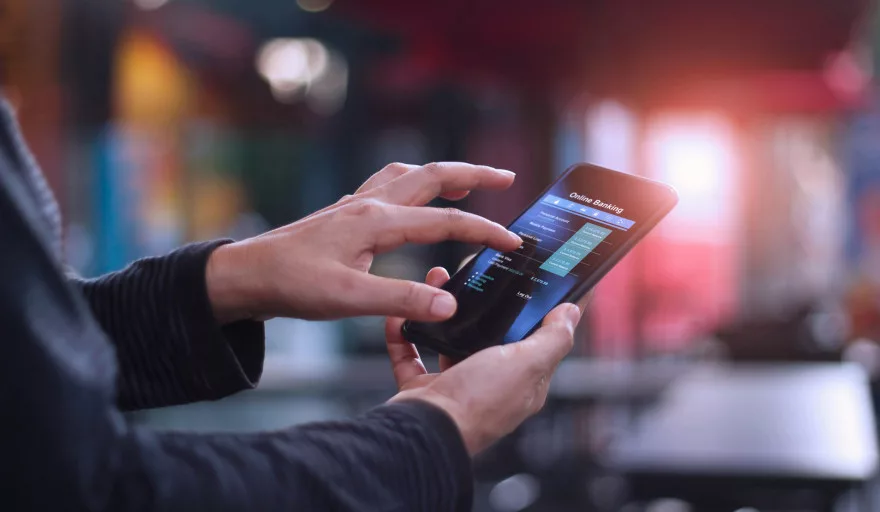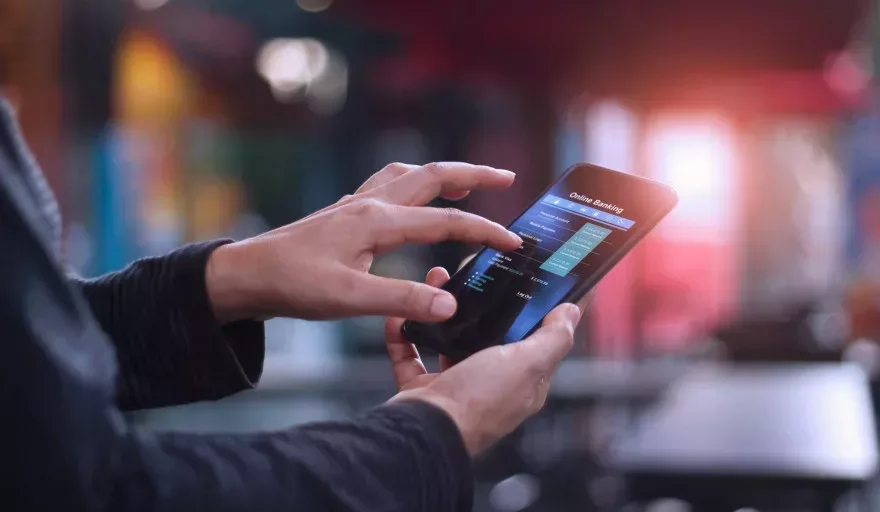
Following the recent release of the GSMA’s latest State of the Industry Report on Mobile Money, we caught up with the association’s Head of Mobile Money Programme Ruan Swanepoel
Edited by: Tom Wadlow
There is no doubt that 2019 was a big year for mobile money.
Edited by: Tom Wadlow
There is no doubt that 2019 was a big year for mobile money.
Worldwide there are now more than a billion registered accounts, with almost $2 billion being transacted a day on average – and for the first time digital transactions represented the majority of mobile money interactions.
In March 2020, the GSMA unveiled its 2019 State of the Industry Report on Mobile Money, offering a view of the mobile money landscape and highlighting the impact that greater financial inclusion has on lives, economies and innovation, especially in emerging markets.
To find out more about the study’s key findings, we put questions to the GSMA’s Head of Mobile Money Programme Ruan Swanepoel.
Africa Outlook (AfO): You report that digital transactions for the first time represent more than half of mobile money transactions. What exactly does this mean and how important a milestone is it?
Ruan Swanepoel (RS): This is a signal of growing relevance and the shift from cash to digital that the industry has been waiting for. Not only are more people using their mobile money accounts more often, they are also using a breadth of services – for school fees, ecommerce, international remittances, savings, credit, pay-as-you-go utilities – and relying less on cash.
Primarily, this milestone is a by-product of the industry becoming a more integral part of the financial ecosystem. In most markets, customers can transfer money between accounts held with different mobile money providers and with other financial system players such as banks. This peak in digital transaction also shows that providers are taking big steps in making these services more accessible to third parties, fostering local entrepreneurialism and innovation.
AfO: How important is mobile money in a time of COVID-19 lockdown in many parts of the world?
RS: In the past few weeks, mobile money providers across the world in collaboration with governments have come up with ways to encourage the adoption of digital payments, in an effort to potentially slow the spread of the virus by reducing cash handling and physical contact. These efforts include reduced or waived transaction fees, and increased transaction limits.
We have also seen KYC requirements being relaxed in some markets, to allow SIM registration information to be used for opening accounts. Given the reach and scale of these services globally, and specifically across Africa and Asia, we see the industry playing an important role in slowing the spread of COVID-19.
AfO: What have been the keys to increasing consumer trust in mobile money?
RS: The mobile money industry of today has moved from its early days and has a host of seasoned providers with a broad set of operational capabilities, a full suite of products and a global reach. Mobile money was originally a very niche product, mainly used for sending money back home. As the industry scaled up and with more use cases that address the daily needs of consumers being launched, the uptake of the service organically grew and the level of consumer trust enhanced. In addition, the success of mobile money of today is in large parts due to regulation that enables low-cost services for the financially excluded.
Also, as providers mature, integrate with other industries, and broaden the scope and scale of their offering, the importance of corporate responsibility has come to the fore. In recognition of this, the GSMA has led the industry to develop the Mobile Money Certification scheme, providing a comprehensive risk management and consumer protection framework. Certification enhances trust with local regulators, attracts commercial business partners and merchants, encourages other financial institutions to integrate and assures customers that their rights are protected. Since its launch in April 2018, 13 leading mobile money providers have become certified, providing safe and reliable services to 204 million registered customers globally.
AfO: Are you finding the mobile money is taking on new use cases more widely? What are people paying for via mobile now that they didn’t a year ago?
RS: In addition to mobile money providers driving product innovation and launching new customer-centric products, by opening their APIs they have also provided an opportunity to developers and startups to drive innovation. As a result, we have seen uptake of mobile money for salary and government aid disbursements as well as more opportunities to pay bills, from utilities to school fees, personal tax and driver’s license fees. We have also seen a considerable uptake in ecommerce transactions facilitated by mobile money, especially in Sub-Saharan Africa where a growing number of small businesses and micro-entrepreneurs are moving towards marketing and selling their products across digital channels.
AfO: How big a challenge is financial inclusion still, especially in Africa?
RS: An astonishing 1.2 billion adults have obtained an account with a bank or mobile money service since 2011, representing great strides in escaping poverty and boosting prosperity. However, according to the lastet Findex report in 2017, 1.7 billion people remain financially excluded.
Progress has been most notable in Sub-Saharan Africa, where account ownership increased from 23 percent in 2011 to 43 percent in 2017. We know that this great achievement can be attributed in large part to the incredible growth of mobile money. However, there is still a tremendous opportunity to unlock growth and increase financial inclusion in the continent’s mobile money sleeping giants: Nigeria, Ethiopia and Egypt. Home to a combined adult population of over 242 million, Africa’s three most populated countries have had limited availability of mobile money services and low rates of financial inclusion. But this won’t be the case for long. In 2018, Nigeria and Egypt softened their policies to allow new players to offer mobile money, including mobile network operators. Ethiopia’s central bank also recently issued regulations allowing non-banks to offer basic financial services, potentially opening the door for mobile network operators.
Sub-Saharan Africa is the enduring epicentre of mobile money; in fact, most of the global growth in 2019 came from Africa. The region added over 50 million registered accounts in 2019, processing about 24 billion transactions with a value of $456 million.
AfO: How are or should mobile money providers continue to evolve their services?
RS: Last year, the GSMA – with input from the broader industry – came up with a vision on potential pathways for evolving the mobile money business model. Accordingly, a renewed ‘payments as a platform’ strategy was developed, articulating how mobile money providers can adapt to a platform-based approach and remain sustainable as online and fintech platforms expand. The ‘payments as a platform’ involves lowering barriers for partnerships or creating a more accessible environment for third parties, and moving away from one-on-one negotiations and one-off third-party integrations. It also enables a diversified revenue model supplemented by monetisation from adjacent services, businesses and governments. All this ultimately unlocks more targeted services for individuals, businesses and communities, and creates a more engaged user base for providers.
In 2019, we saw more providers take additional steps towards a ‘payments as a platform’ model, expanding the digital ecosystem and adjacent services like mobile money-enabled credit, insurance and savings.
AfO: Are we, in your opinion, on our way to cashless society?
RS: In my view, it is important to first reflect upon where we are on the journey toward a cashless society. We have definitely taken a decisive step towards a digital future for all; however, there is still much to be done to close the digital divide and bring more people into the financial system. For this vision to become a reality, the underlying support structures or the building blocks should be in place. Tackling challenges such as digital literacy and creating economies of scale to reach the last mile remain key in driving digital financial inclusion.
AfO: What trends do you expect to see emerging over the next 12 months?
RS: We believe the COVID-19 pandemic has highlighted the need for regulators and policymakers to accelerate strategies towards digital financial inclusion, especially in developing countries. We also expect to see more initiatives from both service providers and policymakers to encourage the adoption of mobile money services by the informal sector, moving beyond the individual’s needs to address those of SME’s and other informal traders that are today dependant on cash. We expect to see a growth in the digital presence with a focus on social commerce in these informal economies.
The GSMA State of the Industry Report on Mobile Money can be seen here: www.gsma.com/sotir
The GSMA State of the Industry Report on Mobile Money can be seen here: www.gsma.com/sotir




























